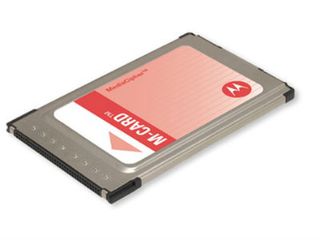CableCARD Successor Inches Ahead

In a meeting last week that became testy at times, a committee tasked with helping the Federal Communications Commission create a successor to the CableCARD began to focus on commercial requirements for a new downloadable security platform for set-tops and other video devices that will work with multiple pay TV providers.
At a second meeting held last Tuesday (March 17), the FCC-appointed Downloadable Security Technology Advisory Committee (DSTAC) outlined some initial ways it will try to ensure that the resulting system complies with the same legal requirements that are placed on multichannel video programing distributors (MVPDs).
The DSTAC, comprised of 18 individuals, was formed in January after the STELAR Act became law in December 2014, activating a provision that will sunset the FCC’s current ban on set-tops with integrated security after a year. The FCC is now tasked with finding a successor aimed at driving a retail market for set-tops and other video devices. The DSTAC is slated to file its recommendations to the FCC by September 4.
Part of last week’s discussion centered on defining the “service” itself, and whether that is limited to linear and video-on-demand, or a panoply that extends to features such as caller ID to the TV, dynamic ad insertion, customer care portals and customer service tools, and metadata associated with video content.
“Things have come a long way” over the past decade in terms of the sophistication of features that are now rolled into MVPD video services, Jay Rolls, SVP and CTO of Charter Communications, said.
Adam Goldberg, principal, AGP/Public Knowledge, outlined some desired baseline consumer requirements, noting that, at a high level, the downloadable system should provide the ability for unaffiliated third parties to build navigation devices for sale at retail in a way that is portable – meaning a customer can use it with different MVPDs in different parts of the country. That should also cover an MVPD’s full set of video services, including VOD, pay-per-view and more complicated services that are delivered suing switched digital video technologies, he said.
The meeting was also marked by some debate on whether third parties can disaggregate pieces of an MVPD’s service, because content is typically licensed as a service and, per the contracts, must be packaged together.
Multichannel Newsletter
The smarter way to stay on top of the multichannel video marketplace. Sign up below.
Charter’s Jay Rolls, for example, pointed out that there should be restrictions on relocating channels in the lineup, but Goldberg said it’s possible that “channel numbers might not flow through to a retail environment.”
The discussion did eventually shift to the topic of security. Robin Wilson, vice president, business development at Nagra, said the DSTAC must be mindful of creating a system that is renewable, noting that the downloader itself plays a “critical role” and needs to be recognized as “the Achilles Heel of this system.”
‘Black Box’ Concept Polarizing
As was the case at the first DSTAC meeting in February, the notion of a “black box” remains a polarizing issue. Is it a separate piece of hardware or a logical chip-level component that would go into a set-top or another video device? Does the term even belong in the discussion?
The commission directed the committee not to focus on implementations yet. “The idea is to speak in terms of requirements,” Alison Neplokh, chief engineer for the FCC’s Media Bureau, said.
“We want to define the ‘what’ before we start working on the ‘how’,” Rolls agreed “That’s at the root. We want to nail down requirements before we try to solve the development piece of the solution.”
Creating those requirements is a major challenge considering the disparate systems used by MVPDs. In a portion of the meeting focused on technology and preferred architectures, Bob Clyne, senior vice president of engineering and new technologies at Cablevision Systems, noted that U.S. cable system control systems, video encryption and deciphering systems are far from uniform, and certainly differ from those operated by satellite TV and telco TV providers.
Are Apps The Answer?
There is also disagreement as to whether the use of video streaming apps solves the problem at hand. MVPDs and their programming partners have developed authenticated apps that run on a wide range of retail devices, including iPads, Roku boxes and gaming consoles, but Goldberg argued that the UI remains largely under the control of operators, making it fall short of creating a fully open and competitive retail market.
“Maybe it’s good for consumers…but it doesn’t make it a competitive navigation device,” he said.
“It’s not completion if the choice of apps is only one, from the cable provider,” Dr. Joe Weber, chief technical officer for TiVo’s service provider business unit, said.
Mark Hess, senior vice president, office of the chief technology officer, business and industry affairs, Comcast Cable, countered that video app development has opened to door to more completion as MVPDs continue to extend services to smartphones, tablets, smart TVs and gaming consoles.
“The app world has embraced those platforms,” Hess said. “To frame this as non-competitive is just not factually correct…To say there’s no choice is ludicrous.”
Update: The FCC announced that the third DSTAC meeting will take place Tuesday, April 21, 2015 from 9:30 a.m. to 12:30 p.m. ET.
